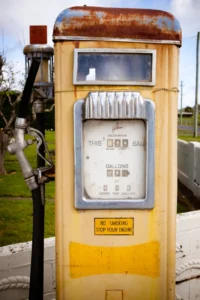Working and Living in a Remote Zone Tax Offset
Zone Tax Offset and the 2015 Budget, Zone Rebate Fly in Fly out
Working and Living in a Remote Zone Tax Offset: Understanding Your Entitlements
The Australian government recognises that living and working in remote or isolated areas can bring unique challenges. The Zone Tax Offset (ZTO) was established as a way to provide financial relief for those living in these areas. If you’re living and working in one of these designated zones, you may be eligible for this tax rebate, reducing the amount of tax you owe to the Australian Taxation Office (ATO). In this blog post, we will delve into what the ZTO is, the changes introduced in the 2015 Federal Budget, and what the offset could mean for you, especially if you’re involved in a Fly-In-Fly-Out (FIFO) work arrangement.
What is the Zone Tax Offset?
The Zone Tax Offset is designed to assist individuals who live or work in remote areas, commonly referred to as “zone areas.” These areas are determined based on their distance from major population centres and the relative difficulty in accessing services and infrastructure.
Australia’s zone areas are divided into three categories:
- Zone A – For those living in more remote areas.
- Zone B – For individuals living in less remote, but still isolated, areas.
- Special Areas – Extremely remote areas that experience even greater isolation.
Individuals who reside and work in these zones may be entitled to claim the Zone Tax Offset, provided they meet the eligibility requirements set by the ATO.
Zone Tax Offset and the 2015 Budget
In the May 2015 Federal Budget, the Australian Government introduced changes to the eligibility criteria for the Zone Tax Offset, specifically targeting FIFO workers. Before 2015, all individuals living and working in a designated zone area, regardless of their primary residence, were eligible for the rebate. However, the 2015 changes were aimed at tightening eligibility, specifically focusing on individuals who truly live in these remote areas.
The most significant change introduced in the budget was the removal of eligibility for FIFO and Drive-In Drive-Out (DIDO) workers if their primary residence was not in a remote zone. Before this change, workers who flew into remote areas for work, even if they lived in a major city, could still claim the ZTO. The new rules ensure that only those who genuinely live in the remote area are entitled to the offset. If you’re a FIFO worker, you will only be eligible for the ZTO if your usual place of residence is within a designated zone.
In this Budget, we are amending the Zone Tax Offset so that it is only available to those who have genuinely moved to specified remote areas, saving $110 million.
Budget measures, budget paper no. 2: 2015–16, op. cit.
What is Fly-In Fly-Out (FIFO) Work?
Fly-In Fly-Out (FIFO) refers to an arrangement where employees live in one location, typically a city, and fly into a remote area for work. These workers usually spend a set period (such as a few weeks) at the remote site and then return to their usual residence during time off.
For FIFO workers, the changes in the 2015 budget meant that they could no longer claim the ZTO unless their usual place of residence was within a designated remote zone. This adjustment was intended to ensure that the tax rebate was only being provided to those who lived and faced the challenges of residing in remote areas, rather than those who simply worked there temporarily.
How Much Can You Get from the Zone Tax Offset?
The amount of Zone Tax Offset an individual can claim depends on:
- Your zone area – The amount varies based on whether you live in Zone A, Zone B, or a Special Area.
- Your taxable income – The ZTO is a rebate, which means it reduces the amount of tax you owe, but it does not provide a direct refund.
As of 2022, the Zone Tax Offset amounts are as follows:
- Zone A: Up to $338
- Zone B: Up to $57
- Special Areas: Up to $1,173
The larger offset amounts for Special Areas reflect the extreme remoteness and challenges associated with living in these regions, where access to services and infrastructure is considerably more difficult than in other areas.
Eligibility: How Long Do You Need to Live in the Zone to Qualify?
To qualify for the ZTO, you must live or work in a designated zone area for at least 183 days in a financial year. The financial year in Australia runs from 1 July to 30 June, and the 183 days must be within a single income year. This means that even if you lived in a remote zone in previous years, the days from those years do not count towards the current year’s eligibility. The ATO is strict about this requirement.
Note: If you live in a remote zone for part of two financial years, the days can be combined to meet the 183-day requirement, but only if at least part of the second financial year includes days where you lived in the remote zone.
For example, if you lived in a zone for 100 days in the 2023 financial year and 83 days in the 2024 financial year, you would meet the 183-day requirement, provided at least one day in the 2024 financial year was spent in the remote zone. However, the year you are claiming the offset must include a period in which you were living in the zone.
Example Scenario: Ineligible for the Zone Tax Offset
Let’s take a look at an example of an individual who cannot claim the ZTO:
Levi, an Engineer Levi lives in Adelaide, South Australia, and works as a FIFO engineer for a mining company in Alice Springs. He typically works 12-day shifts in Alice Springs and then returns to Adelaide for four to eight days at a time. Although Levi spends a significant amount of time in Alice Springs—more than 183 days in total—his usual place of residence is still in Adelaide, which is not in a designated zone.
Because Levi’s main residence is in Adelaide, he is not eligible to claim the ZTO, even though he works in a remote area. The ATO requires that the taxpayer’s main place of residence be in the zone to qualify for the rebate.
Special Circumstances: FIFO and DIDO Workers
As highlighted above, FIFO and DIDO workers who do not reside in a remote zone but travel there for work are no longer eligible to claim the Zone Tax Offset. However, if a FIFO worker’s usual place of residence is in a remote zone, they may still be entitled to the offset, even if they work in a different zone area.
Can I Claim the Offset for Past Years?
If you lived in a remote zone and met the 183-day requirement in a previous year but failed to claim the ZTO, you may still be able to amend your tax return for that year. The ATO allows amendments within two years of the original assessment for most taxpayers. However, it’s essential to consult with a tax professional to determine whether you are still eligible to claim for past years.
How Do I Claim the Zone Tax Offset?
Claiming the ZTO is straightforward, and it’s done when you lodge your individual tax return. The amount you are eligible to claim will be automatically calculated based on the information you provide regarding your place of residence and the number of days you lived in a designated zone. Ensure that you accurately report the number of days spent in the zone area, as the ATO may request evidence to support your claim. It is advisable to use your actual address in the remote area where you reside, rather than using the address of a family member or another address outside the zone. Using an incorrect address could lead to complications if your claim is reviewed by the ATO, as they will expect proof that your main residence is indeed within the designated zone area.
Final Thoughts
The Zone Tax Offset can offer substantial tax savings for individuals living and working in some of the most isolated parts of Australia. However, it’s important to understand the eligibility requirements and the changes brought about by the 2015 Federal Budget. If you’re unsure about your eligibility, especially as a FIFO or DIDO worker, it’s always a good idea to seek advice from a registered tax agent.
At Highland Accounting Services, we specialise in helping individuals navigate complex tax regulations, including the Zone Tax Offset. If you have any questions or need assistance with your tax return, don’t hesitate to reach out.
By staying informed and ensuring that you’re eligible, you can take full advantage of the tax offsets available to you and reduce your tax liabilities in a way that reflects the realities of living and working in Australia’s most remote areas.



